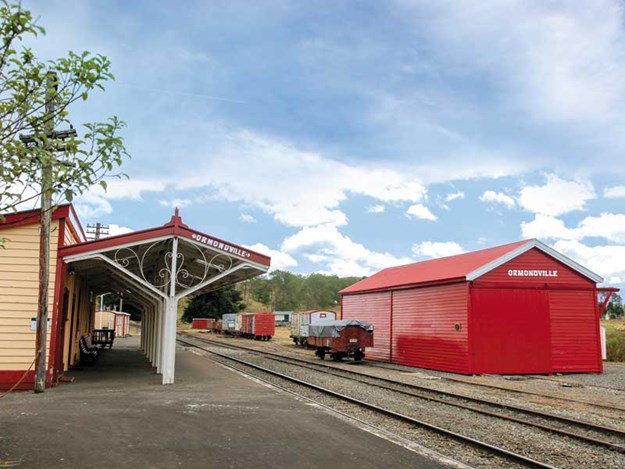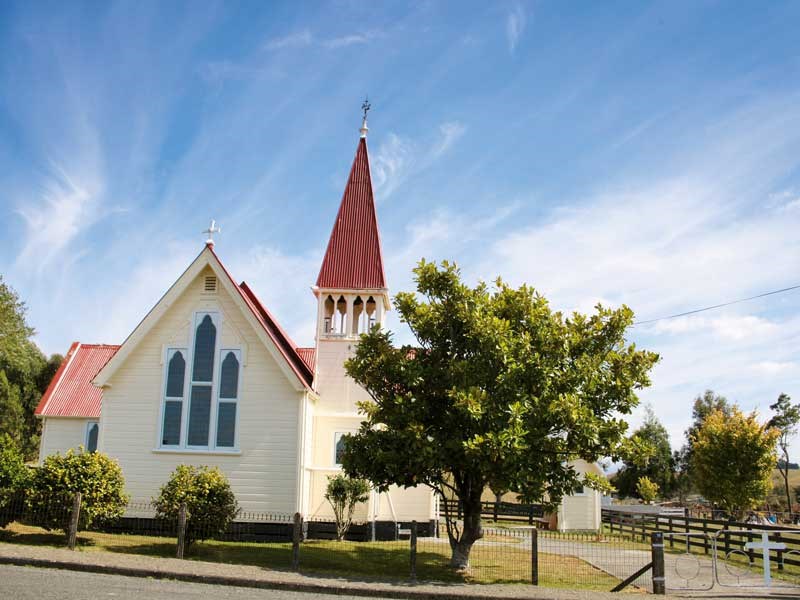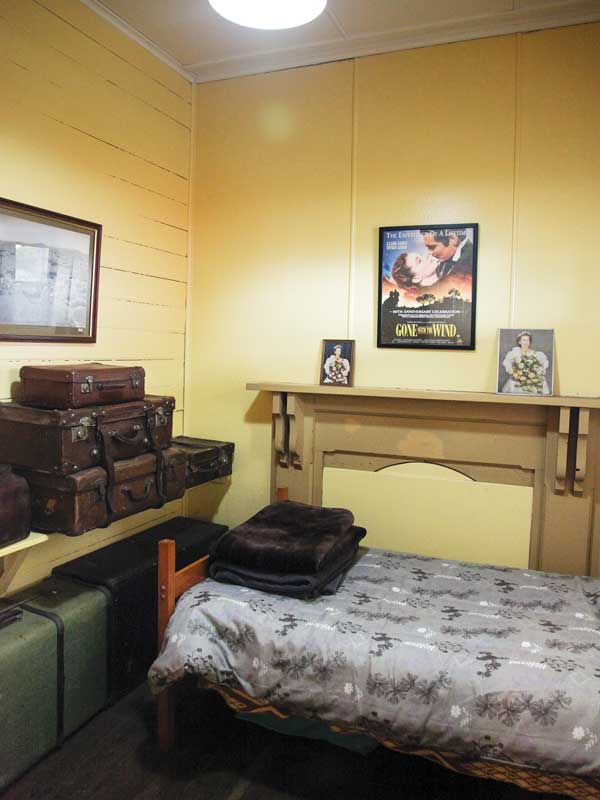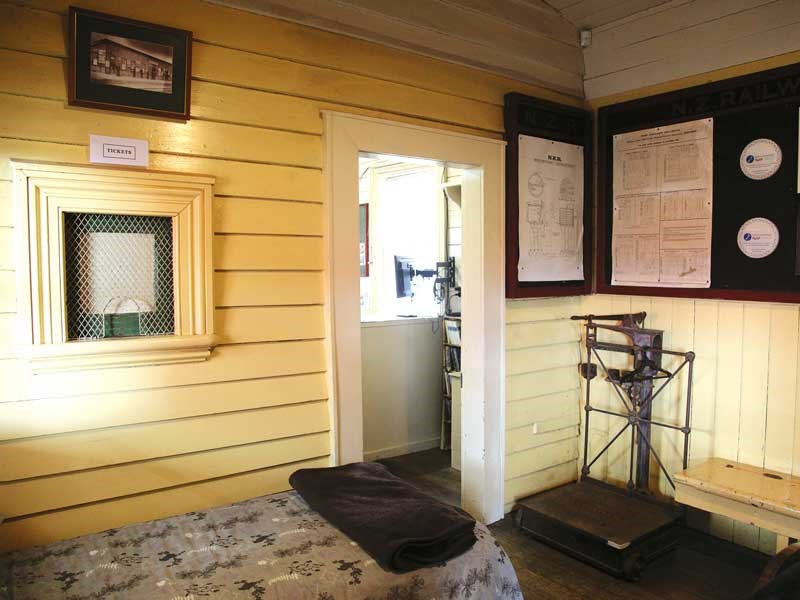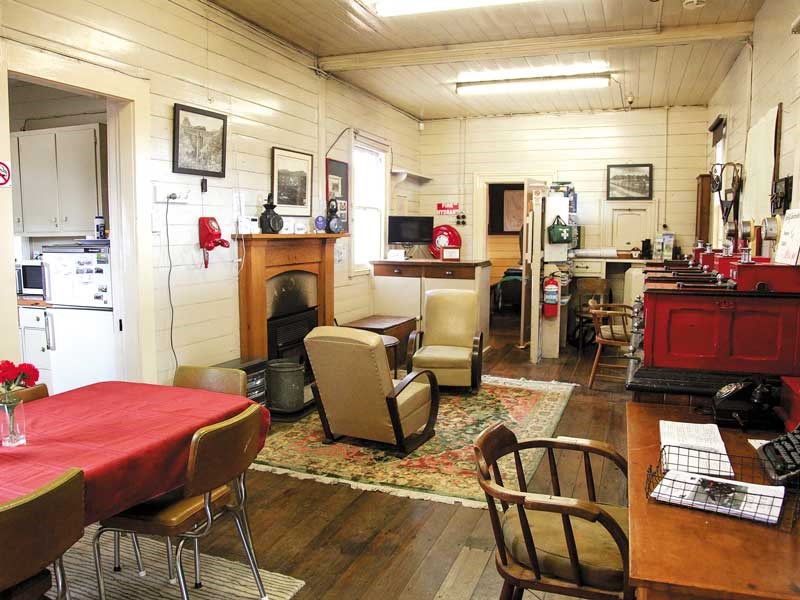The Ormondville railway station in southern Hawke’s Bay was once the hub of the district. It was a place where journeys of all kinds began; soldiers left for the First and Second World Wars from its platform, farm stock was loaded and transported, as were volumes of many other goods.
Now only a handful of freight trains trundle along the tracks each day. As transportation methods changed, the station became less relevant, and finally closed its doors in 1991.
When its future looked doubtful in 1986, a group of heritage railway enthusiasts formed the Ormondville Rail Preservation Group (ORPG) to set about restoring, at first, the goods shed and, later, the station.
Now the picturesque Vogel-era station, built in 1880, has been preserved in authentic 1950s working condition.
Classed as a Heritage Two historic place, the Ormondville station is now ‘the finest example and only surviving Class 5 (smallest) station’ remaining on the New Zealand railways operating system.
It has also been converted into self-catering accommodation. It sleeps up to eight people, is cosy and rustic and packed with railway memorabilia. In 2016 the ORPG won the supreme award at the Trustpower Tararua District Community Awards for their work.
Unique experience
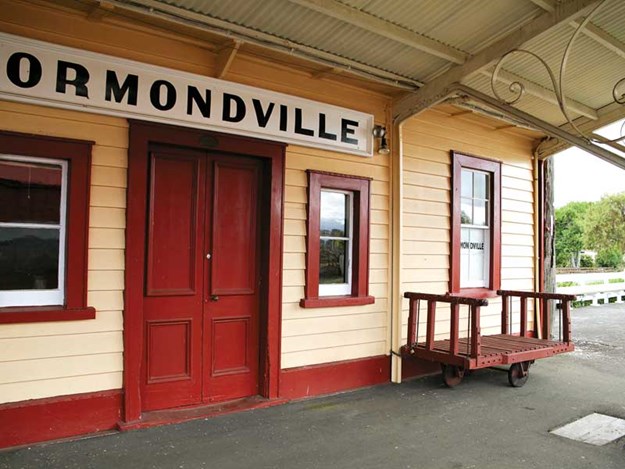 |
Lovingly restored, the station’s paintwork is pristine |
There can’t be many places where the bedroom door opens out onto a railway platform and beyond to a picturesque hamlet. We breakfasted here, serenaded by chortling magpies and the lazy drone of a topdressing plane.
The steeple of the 135-year-old Church of the Epiphany glinted against the Ruahine Range. The room we stayed in was formerly a coal storage area. Apparently, when it came to be restored, the matai timber walls were blackened with soot and the floor rotting.
Builders have done a wonderful job of making it into comfortable sleeping quarters with just the right amount of railway nostalgia: vintage trunks, photos and a stationmaster’s uniform hanging in a corner.
I couldn’t resist trying it on, and luckily it was the perfect fit! Because it was Art Deco weekend in Napier, we’d expected to see at least one of the old railcars filled with passengers (a fire ban meant no steam trains were permitted to run).
But not even a single toot or clickety-clack pierced the calm in this quiet neck of the woods. However, freight trains do come past at least six times a day during the week.
The viaducts
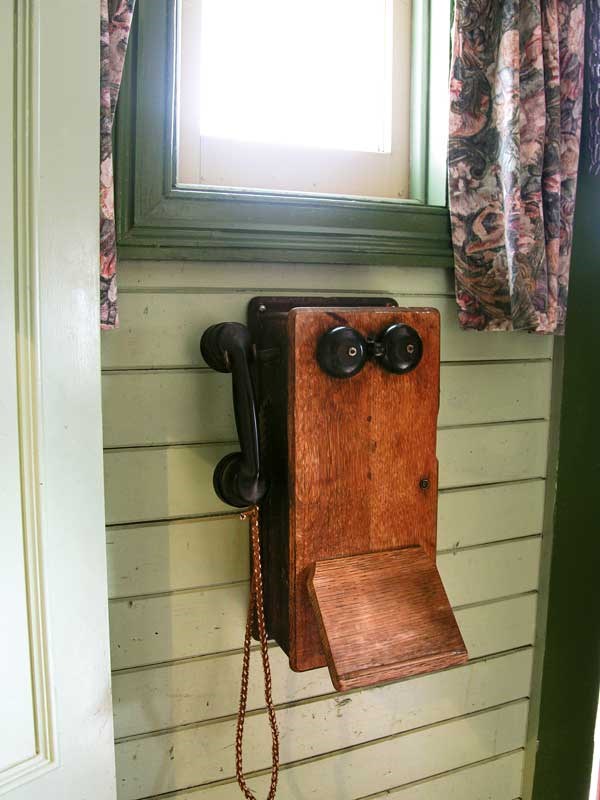 |
The old station phone |
There are five viaducts in the area and they are well worth checking out as they are engineering feats of yesteryear. Built between 1879 and 1884, they were originally constructed with totara and in a trestle design for strength and height.
These were strengthened at various times with steel to cope with large steam locomotives.
The viaducts, all within close proximity, are at Kopua, Ormondville, Makotuku, Matamau and Piripiri. At Makotuku it’s worth stopping into the Black Dog Tavern to sample their delicious hamburgers.
A history lesson
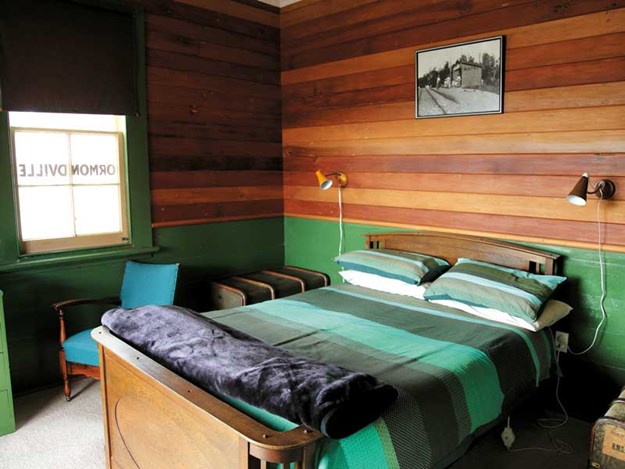 |
Our room was the former coal storage area |
There’s plenty of historical information along the walls at the station and I was keen to find out more. Ormondville is part of an area known as Seventy-Mile Bush, which stretched from Wairarapa to southern Hawke’s Bay.
It was to fell the bush, mill its timber and open up land for farming that many settlers (mostly Scandinavian) came to live in the district. Ormondville railway station was built as part of the New Zealand government initiative to open up the country to rail during the 1880s.
Each district was keen to have its section of railway built first and openings were a big occasion, accompanied by much fanfare: brass bands and politicians, the cutting of a ribbon as the train approached, all cheered on by excited crowds.
However, Ormondville station never received such a grand opening. Costs to build the railway lines had spiraled over budget due to the length of time it took to work in such difficult terrain. Added to this, three viaducts had to be built nearby.
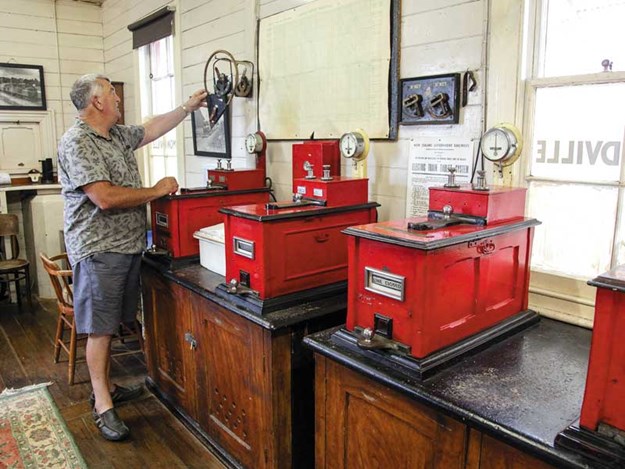 |
The station is packed with history and memorabilia |
The tallest, at Ormondville, is 39 metres high. During that time New Zealand was going through one of its worst recessions and the government had no choice but to cut back on spending.
Consequently, no further work was to be done south of Makotuku (south of Ormondville) and there was no big celebration for the new station.
According to the station notes: “When Ormondville finally opened on August 9th, 1880, the nearest it got to a real opening was a few men and a number of children appearing on the platform out of curiosity, coming face to face with the railway manager, resident engineer and a few passengers on board the official train.
The train was heading to the new terminus at Makotuku. However, a slip occurred, the line was blocked and the officials adjourned to the Settler’s Arms Hotel for lunch.”
Because of this, the people of the district decided to celebrate the station’s 117th birthday in 1997 to make up for the one it had missed out on.
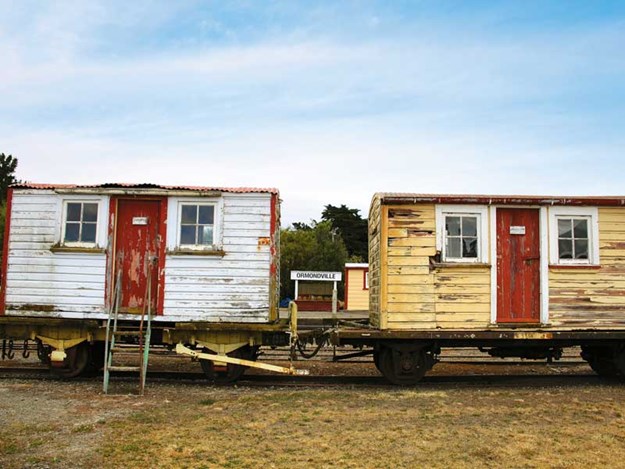 |
These former railway workers’ huts await restoration |
According to a write-up, “it was a proud moment as the Bay Express rounded the curve, swept through the big cutting and eased to a standstill at the platform.”
Ormondville railway station will be 140 years old in 2020 and many are hopeful there will be another celebration. Finally, it must be remembered that the preservation of this fine station is thanks to the ORPG.
Without this dedicated group of volunteers, this precious piece of New Zealand rail history would have been lost forever.
More station notes:
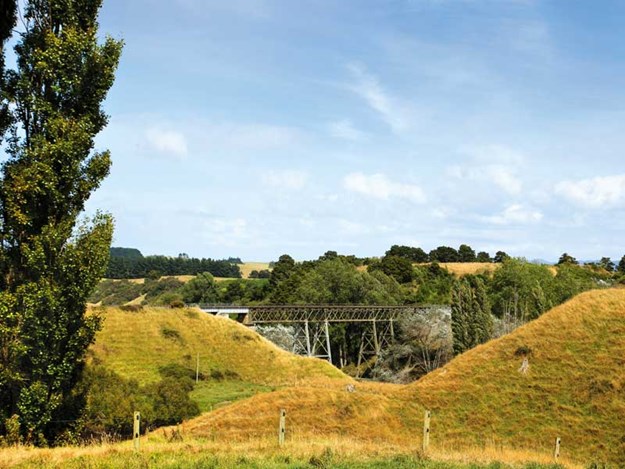 |
The area’s viaducts were originally built with totara but later strengthened with steel |
During the late 19th century, railways were important in opening up the country to incoming settlers. The core business of New Zealand’s railways was rural rather than industrial.
Precincts like this shipped fence posts, fertiliser, tools, machinery, meat, milk, cheese, grain, timber and sheep. There were around 1200 rural stations in the country; now there are just six and Ormondville is the most complete example.
The station and goods shed are the oldest buildings still standing in southern Hawke’s Bay and the second oldest railway buildings in the country. The modest station at Solway in Masterton is the oldest still in use today.
Ormondville railway station milestones
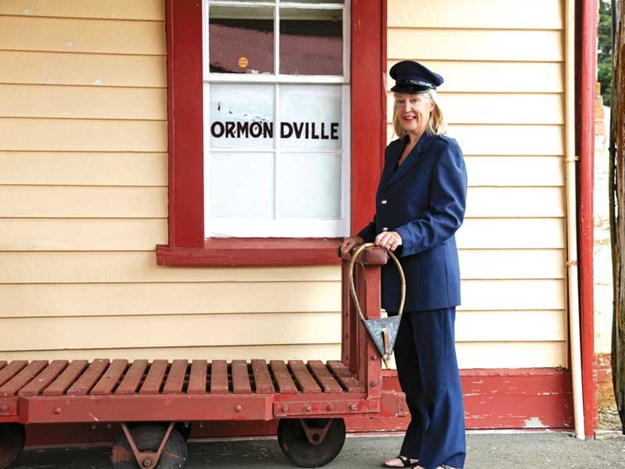 |
Vivienne looks the part in the stationmaster’s uniform |
- 1880 –opened without much fanfare
- 1901 – Goods shed enlarged for freight and postal services
- 1950s – peak years for freight: 120,000 sheep and 7000 cattle; 20,000 bales of wool
- 1985 – Goods yard closes to all traffic
- 1986 – Ormondville Railway Preservation Group established
- 1991 – Closed as a crossing station and last traffic operator withdrawn
- 1997 – 117th celebrations held for Ormondville railway station
- 2001– Last Bay Express passenger train, 7 October
- 2015 – ORPG gets a lottery board grant of $150,000 to restore the historic goods shed
For more information see ormondvillerail.weebly.com

